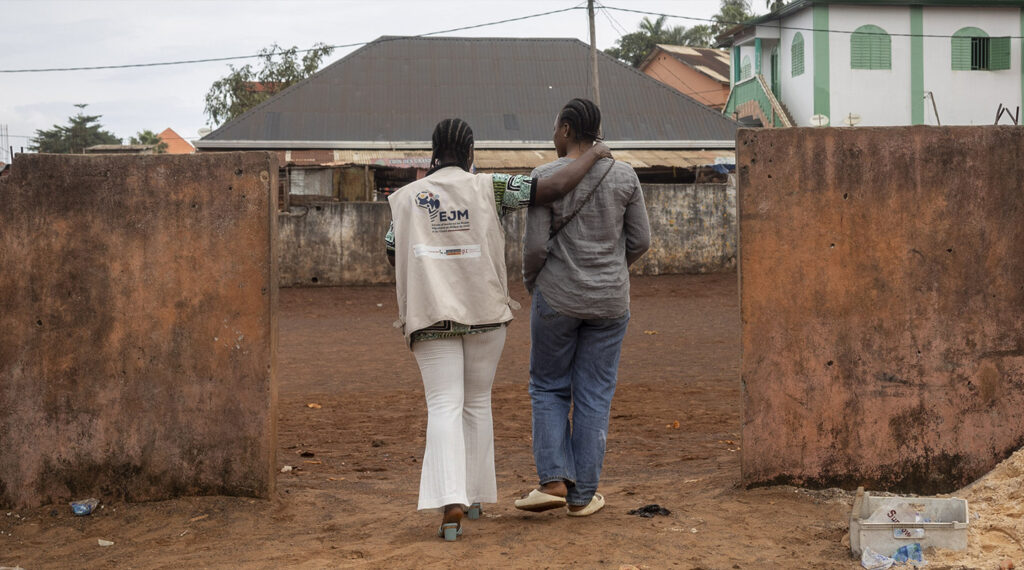Localisation: It’s now or never

The strive for localisation is both a moral and practical impetus. Development experience has shown over decades that projects and programmes are more successful and more sustainable when they are rooted in the local context, managed locally and when local actors share responsibility and accountability.
As simple as this sounds, putting the experiences and principles of localisation into practice has been surprisingly hard. After seven decades of working in development cooperation, Helvetas has experimented with many different models in a variety of contexts. We’ve seen which elements and processes are contributing to success. We also understand how to manoeuvre in these different contexts, and that there are no “quick fix” solutions for achieving localisation.
Why has it been so hard?
Adhering to and complying with the international project management standards set by many donors is a high hurdle. Only a few international actors and even fewer local actors can fulfil these requirements. Hence, eye-level partnerships between international and local development actors with local actors in the lead are hard in practice.
At the same time, co-creation and early involvement of local actors in project design is often discouraged by predefined donor processes, such as budget structures and evaluation criteria. Substantial investment in the organisational development of local partner organisations is an important ingredient of localisation. But it is difficult to fund, because the direct contribution of organisational development to project goals is not easy to measure since it aims at long-term impact.
Working with real change agents can also be challenging since they may be fast-moving, fluid in form, and project results may be intangible – at least in the short term. Adding to this is the fact that local practices and cultural norms may not always be compatible with international charters and standards, creating misunderstandings and possibly conflict. Local actors are also often bound by the local political culture and power structures, which narrows their room to manoeuvre. So, what looks on paper like simple tasks in practice are often marked by numerous challenges.
The shifting landscape
We find ourselves in a new reality. Local politics, nation states’ interests and accelerated globalisation amid the rising debt of developing countries are increasingly hard to reconcile. At the same time, autocratic leaders and their allies in the business community thrive in the absence of transparency and accountable institutions and are a real threat to democracies across the world. The world is now multipolar, and the old powers, including the US as well as many European countries, are not willing to play their former role anymore. They are investing heavily in defence rather than development and seeing it as a zero-sum game – when in reality it has the potential to benefit both donor and recipient countries. Following the dismantling of USAID, one of the thought leaders on localisation and the world’s largest foreign aid agency, the push for localisation is at risk of losing steam. Swift global disengagement of the leading powers since WWII also means a less rule-based international environment. Yet international standards and charters, which are pivotal for development cooperation, are relying on those rules.
Don’t give up on localisation
In every crisis there lies an opportunity – or so the saying goes. Finding the opportunities in the current situation, with diminished funds for development cooperation, shrinking space for civil society and a renaissance of autocrats, is not an easy task. But building local knowledge and capacities and creating space for local actors to assume leadership roles does not only depend on the full coffers of donors.
Finding the sweet spot of combining local knowledge with international networks and experiences is more relevant than ever and can now be explored to its fullest. International civil society could focus on their strengths in technical knowledge, soft skills, access to international knowledge and organisational wisdom. Rather than competing with local organisations, they could be embedded there to provide targeted inputs, advise or act as facilitators. Challenges may arise, though, when it comes to defining what and who really is “local.”
In today’s world vast fortunes can be found beyond the G7 countries. When the funds no longer flow easily from western philanthropies and taxpayers, other sources need to be considered. Internationally raised funds could be leveraged with local funding. In turn, locally raised money would be under more scrutiny, which significantly increases accountability and sustainability. Local and international actors together can play a crucial role in ensuring compliance with internationally agreed rules and standards. By working together, they can monitor and enforce regulations that protect social and political rights. Their collaboration also helps to promote fair practices in trade and labour. Acting as watchdogs, these groups can identify violations and advocate for necessary changes. This joint effort has the potential to create a significant positive impact on society and the global economy.
Pursuing true partnerships
Global problems like climate change or rising inequality must be discussed globally but also addressed locally. Hence, the combined knowledge and experiences of local and international actors is needed now more than ever – while letting everyone play the role they know best.
We all need to find new ways to collaborate on a more equal footing, addressing societal and organisational challenges as they present themselves. This requires courage as well as patience, tolerance and sometimes speaking inconvenient truths to all stakeholders.
Authors

